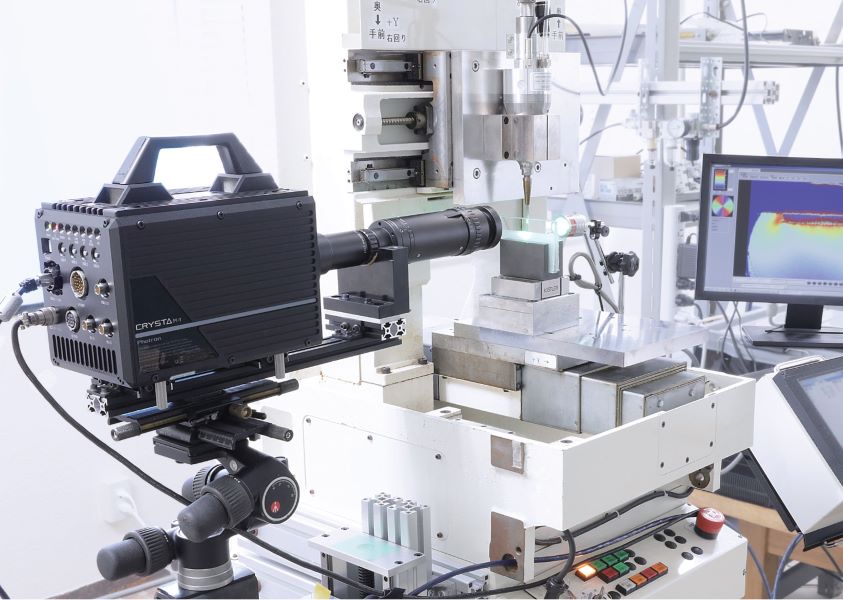High-speed imaging cameras have existed for over a century with many technological advancements made throughout the years. Polarization high-speed imaging is one of those advancements used to capture and analyze the interaction of light with various materials.
Polarized imaging provides detailed insights into the physical properties and behaviors of materials under different conditions, which is invaluable in fields such as materials science, biology, aerospace, and manufacturing.
Understanding Polarization High-Speed Imaging

Polarization high-speed imaging involves using polarized light to illuminate a subject and capture the interaction between light's electric field and different materials. Light is an electromagnetic wave that consists of two major components: an electric field and a perpendicular magnetic field.
Polarization high-speed imaging focuses on the direction of the electric field to define the polarization direction of light. However, the light sources you encounter daily are not polarized, such as the sun or an incandescent light bulb. The light from these sources moves in random directions.
Polarized light has waves that oscillate in specific directions. When this light interacts with a material, it reveals multiple polarization states to detect geometry, surface, and the physical properties of target images in a manner that conventional high-speed imaging cannot.
Polarization High-Speed Imaging Applications
Polarization high-speed imaging cameras have frame rates of more than one million frames per second and capture light in different ways to provide a deeper analysis of stress distribution, stress propagation around impact points, and even visualizations of fluid stress distribution.
These cameras work well in many industries, including the following:
Stress Analysis
One of the primary applications of polarization high-speed imaging is stress analysis. This technique can visualize stress patterns in materials, which is crucial in industries like aerospace and automotive engineering. Engineers can design safer and more efficient structures by understanding how materials respond to stress.
Surface and Structural Analysis
Polarization imaging can reveal surface features and structural details that are not visible with conventional imaging techniques. This is particularly useful in quality control and materials science, where understanding the microscopic properties of surfaces can lead to improvements in manufacturing processes.
Biological Studies
Polarization imaging can be used in biological research to study the properties of biological tissues. For instance, it can help visualize the arrangement of fibers in tissues, which is important in understanding diseases and developing medical treatments.
Fluid Dynamics
Polarization high-speed imaging is also used in fluid dynamics to study the behavior of liquids under different conditions. This has applications in various fields, including environmental science, chemical engineering, and industrial processes.
Photron Crysta PI-1P Polarization High-Speed Camera
For those looking for a polarization high-speed imaging camera, the Photron Crysta PI-1P is highly recommended. This camera is designed to quantify and measure physical stress in transparent and semi-transparent fluids and solids. It can measure at 7,000 fps in full-resolution operation or at 1.3 million fps when running at reduced resolution.
Key Features of Photron Crysta PI-1P
The Photron Crysta PI-1P is a high-performance camera designed for two-dimensional analysis used to understand birefringence, retardation, stress, and impact fracture mechanisms of materials and fluids.
High-Speed Sampling: High-speed 2D birefringence measurement system with a sampling rate of 1.3 MHz, ensuring rapid and precise data capture.
Pixel and Polarizer Design: The image sensor design and fabrication incorporates a pixelated polarizer array made from photonic crystal bonded directly to the CMOS sensor, making the optical system in this sensor resistant to vibration.
- Max Frame Rate: 1,550,000 frames per second
- Max Resolution/Max Frame Rate: 1024 x 1024 @ 7,000fps
- Max Shutter Speed: 369 nanoseconds
- Shutter Type: Global Electronic Shutter
- Sensor: High-speed polarization image sensor
- Memory: 32GB or 64GB
- Interface: Gigabit Ethernet
When it comes to polarization high-speed imaging, the Photron Crysta PI-1P delivers clarity and detail for visualizing fast-occurring phenomena with its image sensor sampling rate that's more than 1,000 times faster than conventional systems.
Your Premier Source for High-Speed Cameras
If you are looking for custom-engineered high-speed cameras to meet your needs, our Tech Imaging team is here to assist you. To speak to one of our representatives, call 800-613-8180 or reach us online if you have questions.

